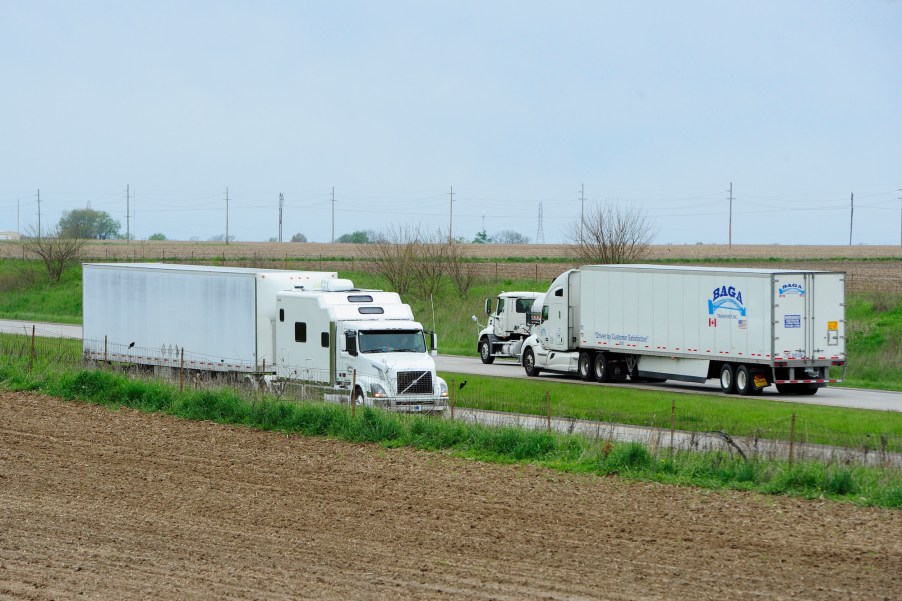
What Are the Different Types of Semi-Trailers?
If you’ve never operated a semi-truck, it’s not unusual to assume they can all serve the same purpose. A semi-trailer already differentiates itself from a conventional trailer because it lacks a front axle. There are also several kinds of semi-trailers: all with different capabilities.
For example, you can’t carry fragile materials on a flatbed trailer without a proper enclosure. Perishable goods can only be transported on semi-trucks with appropriate temperature regulation. Here are all the different kinds of semi-trailers used by truckers today, courtesy of BoxWheel.
1. Dry van

According to BoxWheel, these semi-trailers haul a wide variety of items. They’re fully enclosed to protect any cargo from the weather, but they aren’t temperature-controlled.
Dry van trailers are typically available in 28-feet and 53-feet sizes. The latter is the more common of the two and can carry 45,000 pounds of cargo. However, since they typically have less than nine feet of width, they’re not suitable for wider pallets.
2. Flatbed
A flatbed truck can haul almost any large items or pieces of machinery because it’s not enclosed. Without the extra side walls and roof, it’s also easier for the driver to maneuver the truck.
Some flatbed trailers have guard rails for added protection, and many have very high weight capacities. Wilson sells flatbed trailers that can carry up to 80,000 pounds when evenly loaded. That’s well above the legal range of freight (48,000 pounds) that most flatbed trucks can carry without additional permissions.
3. Liftgate
These semi-trailers are very common for dock loading or unloading because they have deployable platforms at the back. This convenient feature doesn’t have to manually lift or unload pallets.
You can simply load them onto the gate and let it do the work. It also requires minimal effort to operate. Usually, all you have to do is press a button located on a switch box inside the cab.
4. Refrigerated
Also known as “reefer trailers,” these enclosed semi-trucks have huge fans to maintain a cool temperature inside. They’re commonly utilized to transport grocery items such as vegetables and meat and can also be used to transport certain medications.
These semi-trucks also have extra insulation to keep environmental degradation at a minimum. Refrigerated semi-trailers are subject to tighter weight restrictions. According to InTek, the maximum amount of goods you can carry inside these trucks is 44,000 pounds.
5. Tanker
A tanker trailer is the only suitable type of truck for carrying large amounts of liquid, such as gas or water. While their cargo capacities vary by length, some large tankers can hold up to 11,600 gallons of liquid. BoxWheel says these tankers are commonly equipped with multilayer insulation to reduce temperature loss.
6. Car Carrier
As you probably guessed, this trailer is used to transport multiple cars. Its two-tiered structure allows it to carry up to nine vehicles, provided it stays within legal weight limits.
Car haulers are commonly used for transporting vehicles to auto dealerships. Most also have a hydraulics system to safely lower or lift the cars with ramps.
7. Dump (or Tipper)
For cargo that doesn’t need a lot of care, you can use a dump semi-truck. It’s also commonly known as a tipper because its bed can be tilted downward and easily spill its contents. These trucks are usually used for waste management, coal mining, and construction purposes.
8. Container trailers
These are trailers that are specially optimized to carry bulky shipping containers. While most of them are flatbeds, you can also find container tipping trailers or container chassis trailers. The latter trailers often have adjustable axle spacing and lower centers of gravity, making them more versatile.


